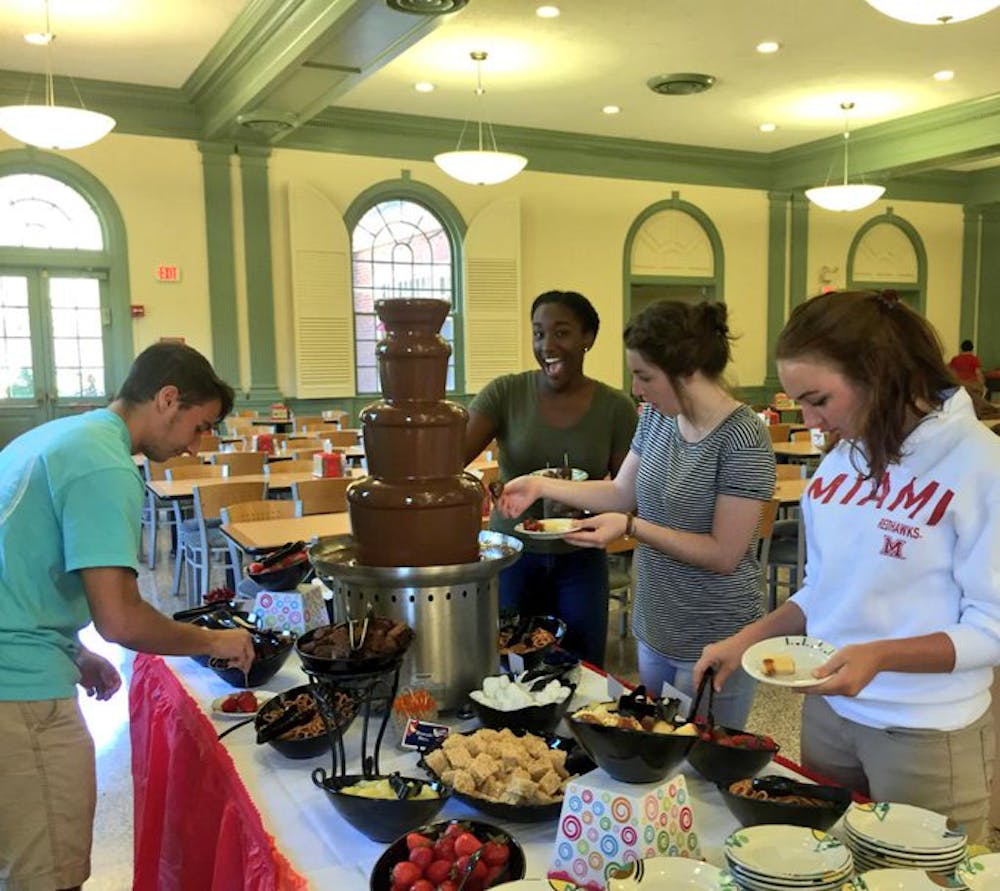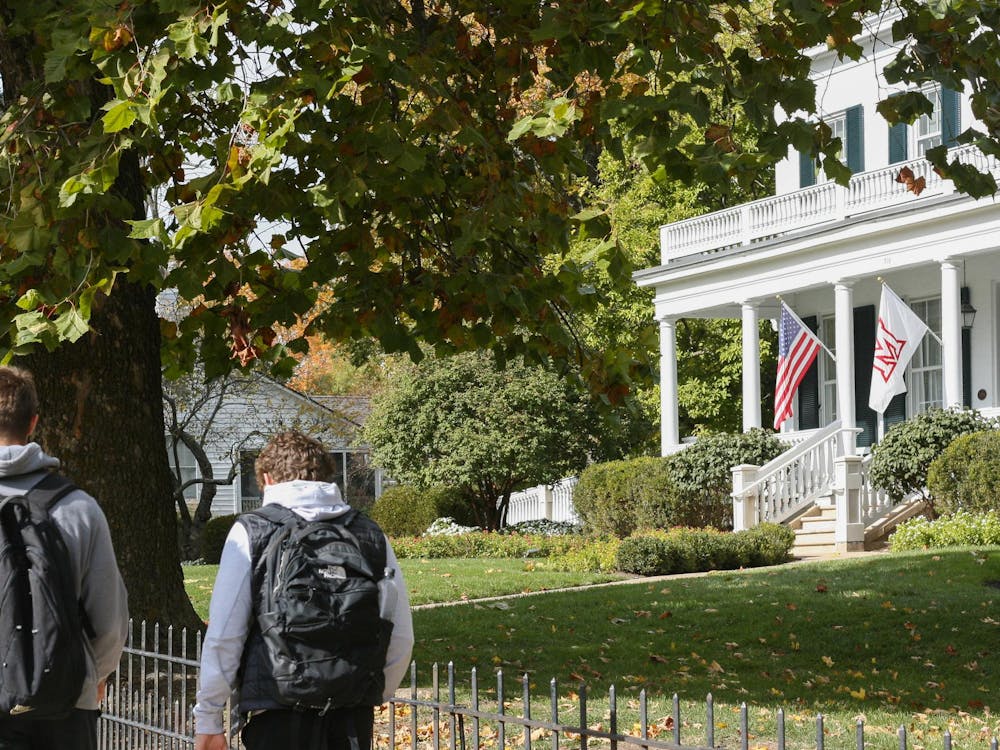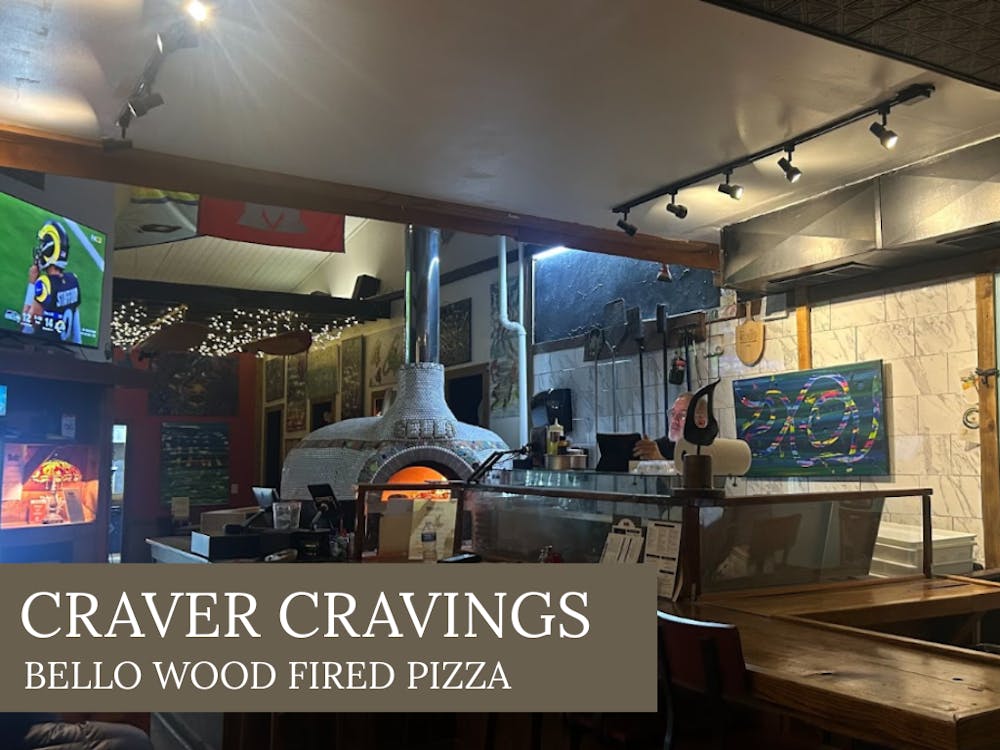A couple of weeks ago, I was mindlessly perusing the Miami University website (as one does when they are procrastinating a six-page English paper) when I stumbled upon a relic of university lore that stopped me in my tracks: Panache.
Staring at images of this early 2010s oasis, I could hardly believe that it once stood in Harris Hall, the site of our current Student Health Center. While some upperclassmen may remember Harris Hall as an abandoned ex-dining hall in their early days of Miami, as a first-year, I had never heard of Harris Dining Center.
For 70 years, Harris Hall had functioned as the primary dining location for South Quad Miamians. At the time of its closure in the 2016-2017 school year, Harris offered buffet meals, a chocolate fondue fountain for special occasions, and two restaurant options — Panache (est. 2005) and La Mia Cucina (est. 2009).
Of course, like any student adamant about procrastinating their schoolwork, I had to know more about what dining on campus used to be like. What other weird pieces of university history could I dig up? How could I better understand what student life was like during Panache’s prime?
To conceptualize the recent history of university dining, we can divide it into two distinct eras: Pre-Armstrong and Post-Armstrong.
In our current Post-Armstrong era, all on-campus restaurants are consolidated in Armstrong, with four dining halls (Garden, Maple Street, Martin and Western) and various grab-and-go markets.
To say that the Pre-Armstrong era was dramatically different would be an understatement. I mean, Pre-Armstrong, half of our current dining halls didn’t even exist.
While some of the Pre-Armstrong relics still exist on campus — Scoreboard Market and King Café, for instance — I would like to put you onto some of my most surprising finds about the Pre-Armstrong era.
Haines Food Court
Before Armstrong Student Center opened in 2014, the Shriver Center functioned as Miami’s Student Union. While the basement of Shriver currently functions as the site of Brick & Ivy and Starbucks, it used to be the site of the Haines Food Court.
For years, Haines Food Court was a popular dining option on campus, offering many food options, including Philly cheesesteaks, breakfast sandwiches and pizza. Spring Street Market—currently located in Armstrong now—originated here as well.
What stood Haines apart from other dining options in Miami’s history? Haines was open 24 hours a day at one point. In an age where our dining halls close at 8 and our restaurants are all closed by 10, I would do anything to bring back a late-night, on-campus food option.
Enjoy what you're reading?
Signup for our newsletter
Alexander Dining Hall
When I first stumbled upon Alexander Dining Hall, I could not believe that my current gym — Clawson Rec Center — used to be home to a buffet line and dinner tables. The dining hall almost looked like a log cabin, with gray stone walls and wooden beams that gave the dining hall a very aesthetically pleasing, homey feel.
With the construction of Western Dining Commons, Alexander Dining Hall joined the graveyard of other Pre-Armstrong dining halls. I’m not too upset about the omission of this dining hall — I like having Clawson Rec on Western campus, and there’s no denying Western Dining Commons is one of the coolest-looking buildings in Oxford.
One Eight 09
Once located in Shriver, One Eight 09 stands out from other dining accommodations Miami has provided in its history. As an on-campus restaurant, One Eight 09 — formerly the 1809 Room until its 2009 renovation — was unique in that it offered a fancier dining experience for students.
One Eight 09 offered grilled salmon, steaks, burgers, soups, Indian cuisine, sandwiches and pizza.
On Sunday mornings, One Eight 09 let students use their meal plan to buy Sunday brunch, making it a popular location for brunch outings.
Out of all the dining relics on this list, I would most love for Miami to bring back this one. Wouldn’t it be awesome to have a formal, sit-down restaurant on campus again?
Erickson Dining Hall
Like Scott Dining Hall and Hamilton Dining Center — two other extinct Miami dining spots — Erickson was attached to a residence hall, specifically Dennison. Before the days of Garden’s immaculate chandeliers and beloved stir-fry station, Erickson and Dividends were the primary dining locations near Farmer.
Erickson was home to many of the staple mini-buffet restaurants found at various Pre-Armstrong dining halls, including Wok This Way, Miami Traditions, Souper Sandwich, Pizza Pi and Hi Carb.
Just reading the name “Souper Sandwich” gave me a sense of weird nostalgia for a dining tradition of which I never was a part. I mean, what an excellent buffet station name!
Because Erickson was not as close to academic buildings, there was a great deal of overcrowding at Farmer’s Dividends in the early 2010s. This led to the construction of Garden, which is in a far more convenient location.
Early Armstrong
Of course, with the construction of Armstrong Student Center in 2014, many of the mini-dining -halls scattered around campus were eliminated, and on-campus restaurants were mostly consolidated into Armstrong.
However, Armstrong has not always had the amalgamation of restaurants you know today.
Miami Ice, Serrano, Mein Street Mongolian & Asian Grill, Haines Boulangerie, Pulley Diner, and Sundial were the first restaurants in Armstrong. Of these, only Pulley’s and Sundial remain.
Other Dining Fun Facts
Maple Street used to be the site of our campus Starbucks.
In 2010, Miami had Crepe A La Carte, a traveling crepe cart that would appear at different locations on campus.
In the 1940s, our student union had a jukebox and a bandstand in our dining space.
If my dining hall research taught me anything, it’s that 1) just about anywhere on campus used to be a dining hall and 2) dining halls are a pretty unique way to look at student history.
Dining halls are a major part of campus life; I mean, I can’t imagine my first-year experience without the daily ritual of cramming all my friends into a booth at Western and gossiping about our lives.
Examining the former dining halls, it is striking to me how much the Miami experience has changed in just the last decade.
The addition of Armstrong, the switch to a swipes and declining dollars-based meal plan, the consolidation of dining halls—our campus makeup is a lot different than it was in the days of Panache and One Eight 09.
It’s hard to predict how outsourcing our dining operations to Aramark will impact the future of dining on campus. What will King Café look like post-renovation? What national chains could potentially come to campus?
Whatever the future of Miami dining holds, I just hope the reopening of Bell Tower is part of it.




